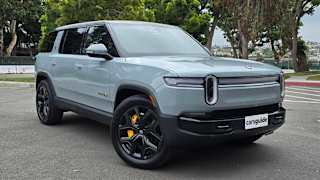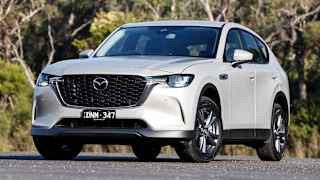To say that our first drive of the Ferrari 12Cilindri was impacted by nasty wet weather and standing water on slick and narrow European roads would be like saying that going outside naked when it’s snowing impacted your level of goose flesh.
For the first 30 minutes I was breathing like someone who’d just been pushed out of a plane with no parachute. When trucks came towards me, and when the rear wheels scrabbled madly to find grip - bringing to mind the whirling legs of the cartoon Road Runner - I breathed in so severely that I think I now have a pair of boxer shorts stuck in my chest cavity.
Fortunately, Ferraris have a 'Wet' setting, which is a work of genius, sensing the amount of grip you might not have and adjusting the power delivery to keep you safe. Remarkably, even in this mode, you don’t feel short changed on power in this wild V12-powered machine.
Unfortunately, the combination of my work ethic, professional pride and male ego meant that I could not allow myself to stay in Wet mode and would occasionally switch to 'Sport', when the rain eased up and the road almost dried out.
It was during these times that, after about an hour, I really started to gel with the Dodici Cilindri and found opportunities to enjoy its stupendously operatic soundtrack.
Much as the emissions laws have squeezed the engine, new sound regulations mean this V12 Ferrari must be quieter, in theory, than ever before, at least from outside.
But the sound designers have gone to a lot of trouble to make sure the sensational noise of this engine spinning its way to 9000rpm-plus finds its way into the cabin, and into your ears, and your very soul.
The temptation to give it plenty in the lower gears was thus overpowering and unending, but this grand tourer is so powerful that exploring the upper ranges in any gear means warping straight past speed limits, and sane behaviour.
Fortunately, the 12Cilindri has stupendous brakes, and while its extreme length - almost 5.0m - causes some nose lifting under acceleration and diving under hard stopping, the car’s mid-engined balance means you always feel planted and in control.
The steering is also super sharp and, while it takes some getting used to, the accuracy of its turn-in encourages you to push harder and harder. I had a fantastic time driving it through long sweeping bends, and a slightly more stressful time in sharp hairpins.
This Grand Tourer really is two cars in one, however, because if you leave the gearbox in Automatic it really does take all the effort away, riding its wall of torque and seemingly capable of driving at any speed from 40km/h to 240km/h in seventh or eighth gear.
It is far more fun, and frightening of course, to change the gears yourself, and explore those higher, scintillating rev ranges.
So, it’s a great car, a collector’s piece, because they’ll never make another one like it, and a moving piece of visual drama. The only problem I have with the 12Cilindri is it’s just not the best Ferrari a huge whack of cash can buy.
Indeed, the Ferrari 296 GTB is not only the best Ferrari I’ve ever driven, it’s the best car I’ve ever been lucky enough to sit in, and it’s more than $100K cheaper.
Apparently the thing to do, if you’re a Ferraristi, is to have one of each. Sounds good.







